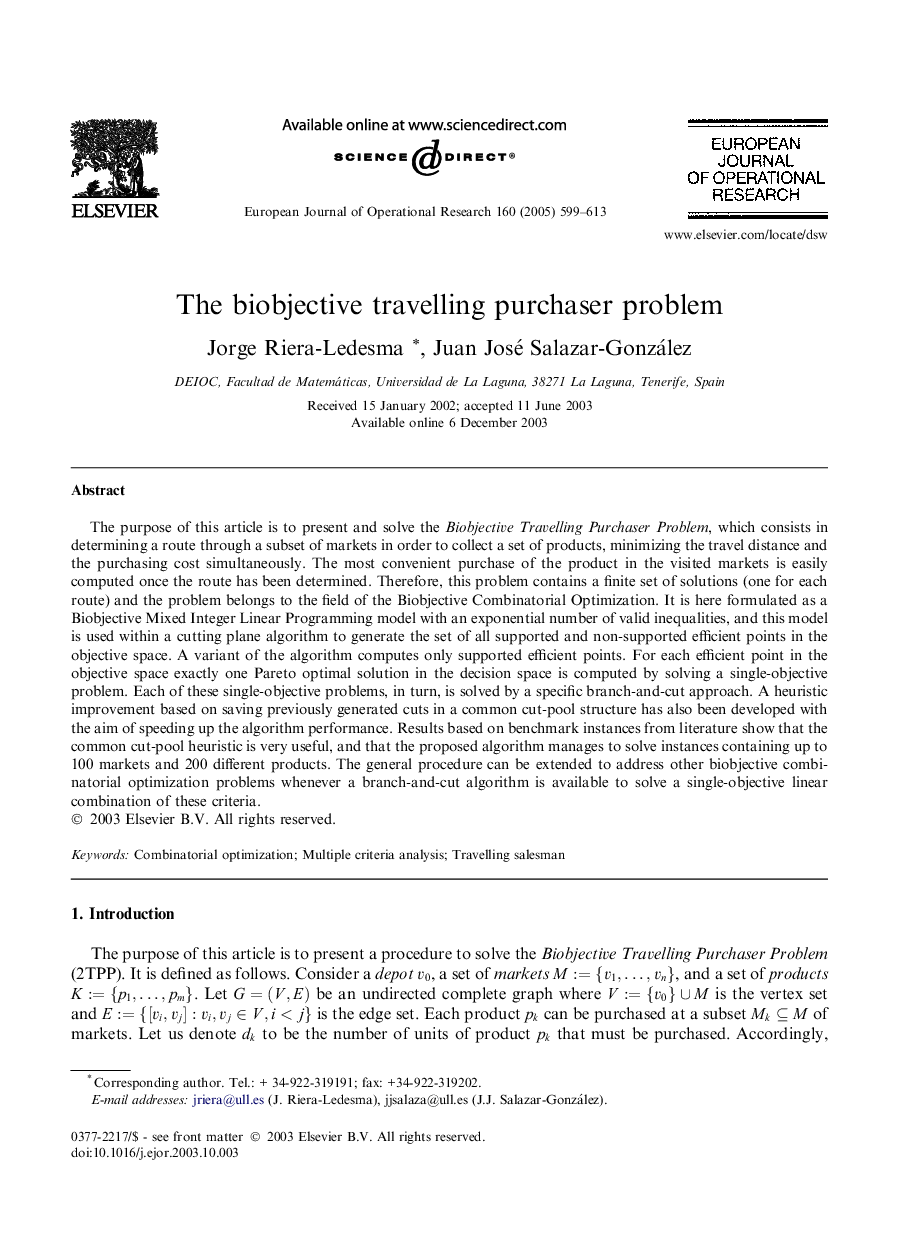| Article ID | Journal | Published Year | Pages | File Type |
|---|---|---|---|---|
| 9664056 | European Journal of Operational Research | 2005 | 15 Pages |
Abstract
The purpose of this article is to present and solve the Biobjective Travelling Purchaser Problem, which consists in determining a route through a subset of markets in order to collect a set of products, minimizing the travel distance and the purchasing cost simultaneously. The most convenient purchase of the product in the visited markets is easily computed once the route has been determined. Therefore, this problem contains a finite set of solutions (one for each route) and the problem belongs to the field of the Biobjective Combinatorial Optimization. It is here formulated as a Biobjective Mixed Integer Linear Programming model with an exponential number of valid inequalities, and this model is used within a cutting plane algorithm to generate the set of all supported and non-supported efficient points in the objective space. A variant of the algorithm computes only supported efficient points. For each efficient point in the objective space exactly one Pareto optimal solution in the decision space is computed by solving a single-objective problem. Each of these single-objective problems, in turn, is solved by a specific branch-and-cut approach. A heuristic improvement based on saving previously generated cuts in a common cut-pool structure has also been developed with the aim of speeding up the algorithm performance. Results based on benchmark instances from literature show that the common cut-pool heuristic is very useful, and that the proposed algorithm manages to solve instances containing up to 100 markets and 200 different products. The general procedure can be extended to address other biobjective combinatorial optimization problems whenever a branch-and-cut algorithm is available to solve a single-objective linear combination of these criteria.
Related Topics
Physical Sciences and Engineering
Computer Science
Computer Science (General)
Authors
Jorge Riera-Ledesma, Juan José Salazar-González,
